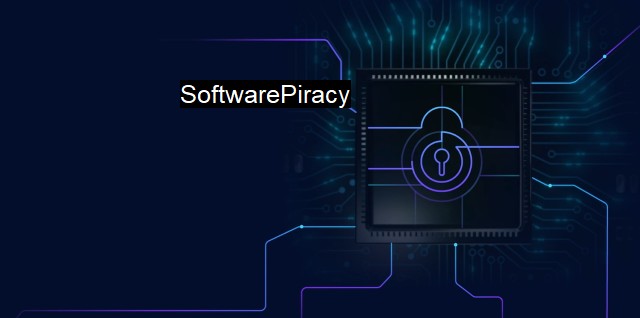What is SoftwarePiracy?
The Impact of Software Piracy on Cybersecurity and Antivirus: An In-depth Overview
Software piracy, in terms of the cybersecurity context and antivirus, refers to the illegal copying, sharing, or using of software without the required permission from the copyright holder. It is a derogatory activity that violates copyright laws and end-user license agreements. It is generally known as theft and violation of the owner's intellectual property rights. In this digital age, controlling its reach remains one of the most foreseeable challenges.Software piracy can occur in many forms, including purchasing a single license and sharing it amongst multiple users, illegally downloading content from peer-to-peer networks, installing the licensed software beyond the agreed number of installations, using counterfeit software, and sharing unreleased officially licensed software amongst developers. Software piracy not only harms software developers and companies initiating fine-based infringements for their creations but damages unsuspecting users and corporations as well.
Software piracy is rampant and intensified within various contexts of the cybersecurity landscape. It presents an immediate and long-term danger to both individuals and institutions that comply with its activities either knowingly or unknowingly.
Individuals or organizations engaging in software piracy leave themselves open for potential legal conflict. Their action can lead to hefty fines and potential terms of imprisonment. It significantly discriminates against the rights of the copyright holder by detracting the financial benefits and revenue they would typically amassed from their creation.
Falling for software piracy furthermore threatens cyber security. The absence of official updates, patches, and technical support upgrades the risk levels of software malfunction and computer system failures. Official products receive periodic updates to fix bugs or vulnerabilities recognized as points of security weakness. Pirated software, often unrecognized within the developer's landscape for updates or user support, carries undisclosed vulnerabilities forwarding an invitation to potential hackers and cybercriminals.
On an individual level, illegal downloads can unknowingly instal malware, spyware, or virulent viruses onto a computer. These can track online behaviour, harvest personal data, damage files, and commit identity theft. since pirated software gets a minimal security scrutiny, it is exceptionally more vulnerable to cyber attacks. Besides, attackers can embed malignant scripts while repackaging the pirated software which can harm the user system and further take control over the entire network.
This boosted illegal activity in cyber space has maliciously emphasised the need for robust antivirus programming and application. Antivirus software provides elements of online security by detecting and obstructing malicious software. Tools to manage antivirus systems are imperative to maintain determinedly, focusing on preventing illegal activity such as software piracy while ensuring cyber security.
Preventing software piracy involves both legal and technical attempts. Copyright laws and regulations try and maintain the balance between lowering piracy rates and simultaneously provide legal protections to any software developer whose rights are being violated.
Meanwhile, organisations are implementing increasingly advanced coding systems to protect their copyrights, including multiple types of encrypted codes that are difficult to replicate. solutions aren't finite or conclusive. The initiation of well-informing individuals and corporations about the detrimental consequences of software piracy stands as a significant preventive measure. Integrity should live at the heart of the digital economy and digital rights execution.
To sum up, the practice of software piracy presents potential risks and threats to the cyber space. Infractors, whether individual users or business corporations, lower their cybersecurity levels while raising the chance for external cyber threats. It emphasizes delayed software progress while blurring the conscientious levels of Internet business ethics. Anti-piracy measures, robust antivirus software, and valid user guidelines can be amplified against the occurring issue. Comparatively, enhanced cybersecurity measures, alongside increments of authoritative copyright sanctions, could tint the digital criminal activities within the spectrum of software piracy.

SoftwarePiracy FAQs
What is software piracy?
Software piracy refers to the unauthorized use, distribution, or reproduction of software without the proper license or permission from the owner of the software. It is a violation of intellectual property laws and can result in legal consequences.What are the risks associated with software piracy?
Software piracy can lead to a range of cybersecurity risks, including malware infections and data breaches. Pirated software may contain hidden viruses, Trojans, or other types of malware that can compromise your system or steal your sensitive information.How can I protect myself from software piracy?
You can protect yourself from software piracy by only downloading software from reputable sources, avoiding suspicious websites or peer-to-peer networks, and using anti-virus software to scan for potential threats. You should also make sure to purchase legitimate software licenses and keep them updated to avoid potential legal consequences.What should I do if I suspect software piracy?
If you suspect software piracy, you should report it to the appropriate authorities, such as the software owner or enforcement agencies. You should also avoid using or distributing pirated software, as this can result in legal consequences and potentially harm your cybersecurity.Related Topics
Copyright infringement Malware Antivirus software Digital certificates Trusted sources
| | A | | | B | | | C | | | D | | | E | | | F | | | G | | | H | | | I | | | J | | | K | | | L | | | M | |
| | N | | | O | | | P | | | Q | | | R | | | S | | | T | | | U | | | V | | | W | | | X | | | Y | | | Z | |
| | 1 | | | 2 | | | 3 | | | 4 | | | 7 | | | 8 | | |||||||